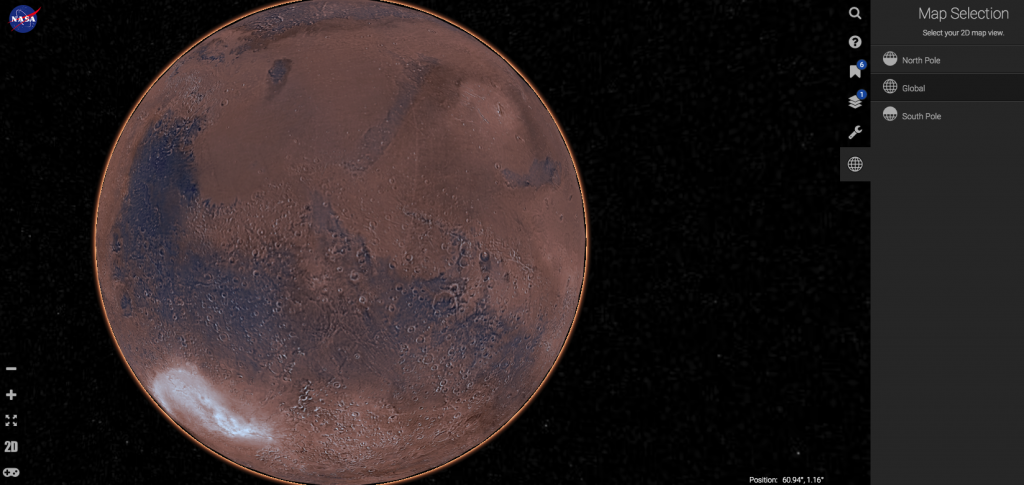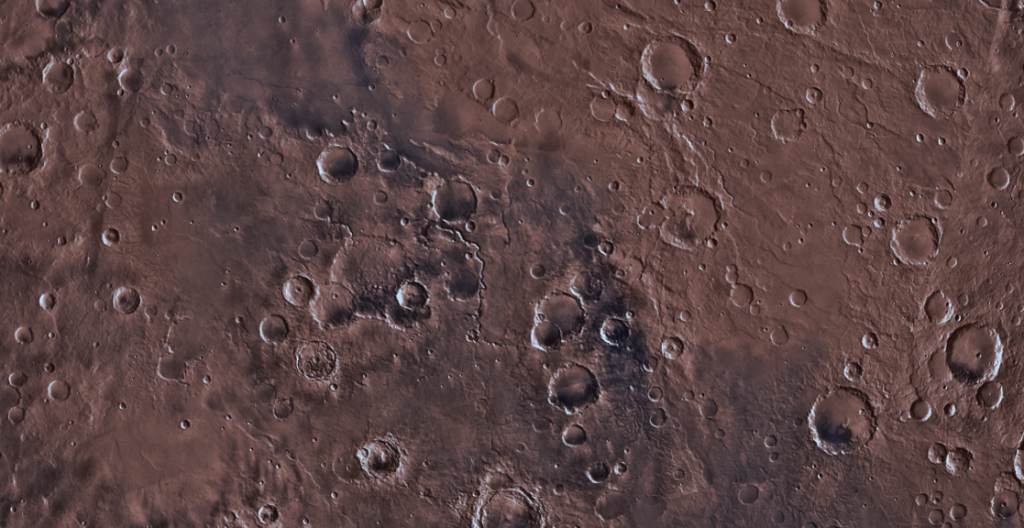NASA has been at the forefront of 3D printing in numerous ways, especially over the last 2-3 years. Whether they are working with companies like Made In Space to 3D print replacement parts on-demand at the International Space Station, or they are making 3D printable files available to the general public, related to their operations, NASA has certainly seemed enthused by this incredible technology.
If you are like me, then you are likely mesmerized by the quality of photos that are accessible online from planets such as Mars. If you were to tell someone 25 years ago that they would be able to sit in front of a computer and view high-resolution 3D images of nearly the entire planet of Mars, zooming in and out to their heart’s desire, they’d likely think you were nuts. But that’s just what NASA has done, yesterday announcing the launch of their Mars Trek web application.
Mars Trek allows anyone, anywhere, whether on a smartphone, tablet or PC, to explore the red planet in its entirety. Allowing users to zoom in or out, virtually anywhere on the planet, while selecting a variety of map layers representing different orbital cameras, any space enthusiast could literally spend hours playing around on this app. In fact, I almost forgot that I was trying to write an article for a few minutes as I was mesmerized by the incredible topography of the Martian planet.
The app is more than just a map though. It’s incredibly interactive, providing users with a set of tools enabling them to measure distance, elevation, sun angles, and more. Most interesting to our readers, however, is likely the ‘Box” tool, which allows the user to highlight any area at all on the map and generate an STL file of that area. Basically we can now 3D print the topography of Mars.
That’s not all though. NASA has also created a special section within the app, called ‘Bookmarks”, which will take the user directly to the landing sites of numerous rovers, including Spirit, Opportunity, Curiosity, Phoenix and Sojourner. Additionally, they have bookmarked the Valles Marineris, a system of gigantic canyons on the planet. When selected, each bookmark will take the user to that specific location on the map and will provide them the option to download the STL file of that particular location. The files are all around 47mb in size and consist of 1 million polygons. NASA says that the files will work with most 3D printers and will show key topographic features such as mountains and valleys. I have not tried printing any of Mars out quite yet, but after downloading several STL files from the app, they do appear to be rather detailed.
Clearly this is a tremendous way to get the public excited, not only about 3D printing, but of space exploration as well. The only question remaining now, is when will someone decide to try and 3D print the entire planet in thousands of separate pieces?
Let us know if you have downloaded any STL files of Mars from NASA’s Mars Trek app and how the 3D prints ended up turning out. Discuss in the 3D Print The Red Planet forum thread on 3DPB.com.
Subscribe to Our Email Newsletter
Stay up-to-date on all the latest news from the 3D printing industry and receive information and offers from third party vendors.
Print Services
Upload your 3D Models and get them printed quickly and efficiently.
You May Also Like
Reinventing Reindustrialization: Why NAVWAR Project Manager Spencer Koroly Invented a Made-in-America 3D Printer
It has become virtually impossible to regularly follow additive manufacturing (AM) industry news and not stumble across the term “defense industrial base” (DIB), a concept encompassing all the many diverse...
Inside The Barnes Global Advisors’ Vision for a Stronger AM Ecosystem
As additive manufacturing (AM) continues to revolutionize the industrial landscape, Pittsburgh-based consultancy The Barnes Global Advisors (TBGA) is helping shape what that future looks like. As the largest independent AM...
Ruggedized: How USMC Innovation Officer Matt Pine Navigates 3D Printing in the Military
Disclaimer: Matt Pine’s views are not the views of the Department of Defense nor the U.S. Marine Corps Throughout this decade thus far, the military’s adoption of additive manufacturing (AM)...
U.S. Congress Calls Out 3D Printing in Proposal for Commercial Reserve Manufacturing Network
Last week, the U.S. House of Representatives’ Appropriations Committee moved the FY 2026 defense bill forward to the House floor. Included in the legislation is a $131 million proposal for...



































